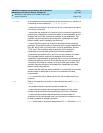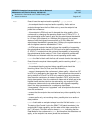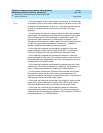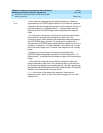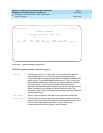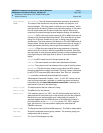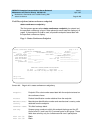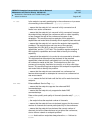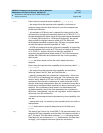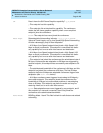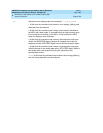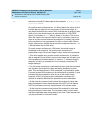
DEFINITY Enterprise Communications Server Release 5
Maintenance and Test for R5vs/si
555-230-123
Issue 1
April 1997
Maintenance Commands and Trouble-Clearing Aids
Page 8-424status conference
8
Drop Reason
(cont’d)
Endpoint Clearing received from DS1 - the disconnect came from the
endpoint. The endpoint notified the MCU that it intended to disconnect.
Far-end Clearing received from DS1 - the disconnect came from either
the network or the endpoint.
Handshake Either framing was never found (the endpoint could not
complete initialization - problems finding Frame Alignment Signal (FAS),
Multi Frame Alignment (MFA) and getting a corrected coded cap-set) or
framing was lost for some time (over 40 seconds) and the endpoint was
disconnected.
IDtimeout The MCU has not received response to the UIN/password
Query from the H.320 user after three attempts. Each attempt has a
system administered timeout period.
Internal MCU has a problem allocating trunk resources necessary to
route the dial-out call for the specified dial-numbers. This problem can
be associated with routing pattern or trunk associated translation (for
example, TAC specified in the dial-out number or routing pattern points
to a trunk group without members), or it can indicate a lack of trunk
resources (for example, all trunk members are maintenance busy or all
in-service members are busy on a call).
Network Clearing received from DS1 - the disconnect came from the
network. The endpoint that had the disconnect notification capability
disconnected without notifying the MCU.
Not-MCU The dial-out destination number(s) of the “CAS” extension has
terminated to a number that is not a dial-in cascade MCU extension.
No-ring This dial-out drop reason occurs when the call has been up
for 30 seconds and no ringing is detected.
Reorder This dial-out drop reason occurs when the MCU detects that
there are no available trunks in the network to place the call. This drop
reason is detected by MCU CPTR resources. See “Dial-out” for a
description of CPTR usage.



